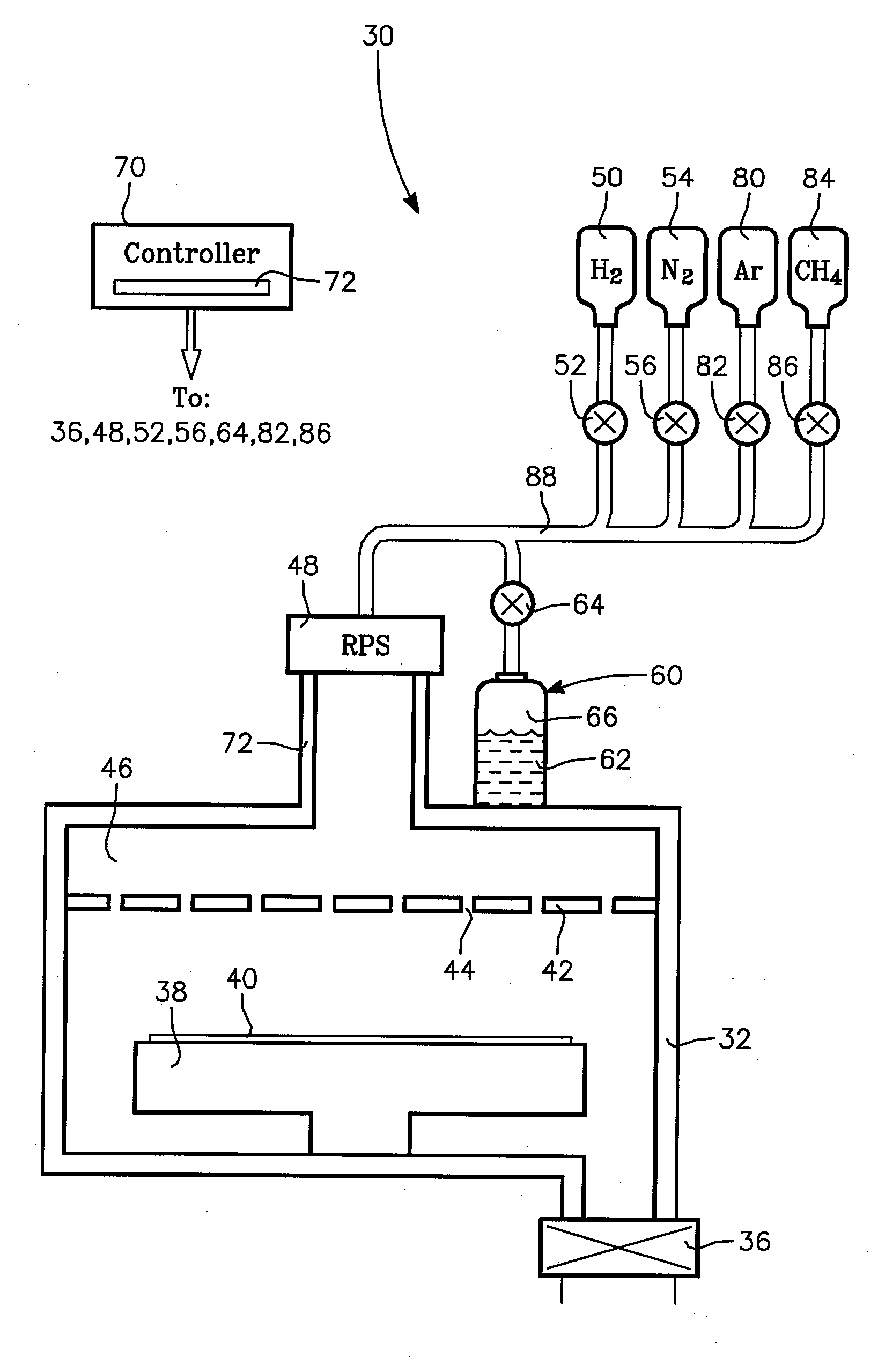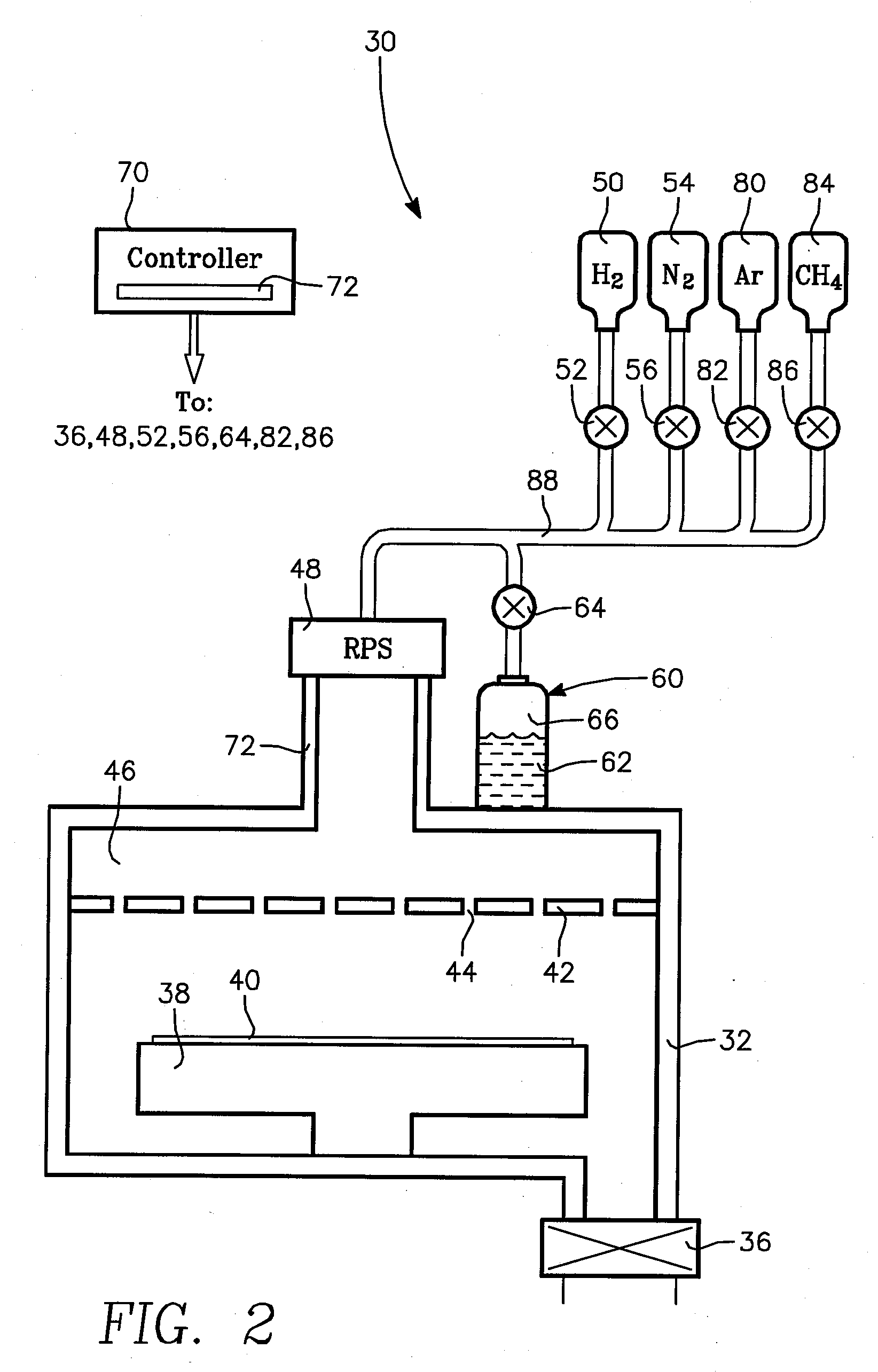Hydrogen ashing enhanced with water vapor and diluent gas
a technology of hydrogen ashing and water vapor, which is applied in the direction of photomechanical equipment, instruments, and semiconductor/solid-state device details, etc., can solve the problems of difficult etching, difficult hydrogen ashing, and relatively fragile porous dielectric materials
- Summary
- Abstract
- Description
- Claims
- Application Information
AI Technical Summary
Benefits of technology
Problems solved by technology
Method used
Image
Examples
Embodiment Construction
[0014]The addition of water vapor and a large amount of argon or helium to the hydrogen-based ashing plasma greatly increases the concentration of hydrogen radicals and increases the ashing rate with reduced damage to low-k dielectrics.
[0015]The invention may be practiced in a plasma ashing reactor 30, schematically illustrated in the cross-sectional view of FIG. 2. A vacuum processing chamber 32 is pumped by a vacuum pumping system 36 to the low Torr range. A pedestal 38 within the chamber 32 supports a wafer 40 to be ashed in opposition to a gas showerhead 42 supplying a process gas through a large number of apertures 44.
[0016]The process gas is supplied to a manifold 46 in back of the showerhead 42 through a remote plasma source 48 which excites the process gas into a plasma. The remote plasma source 48 may be located a distance away from the vacuum chamber 48 but is still considered ancillary to it since the gas containing the plasma generated in the remote plasma source 48 flow...
PUM
| Property | Measurement | Unit |
|---|---|---|
| dielectric constant | aaaaa | aaaaa |
| dielectric constant | aaaaa | aaaaa |
| dielectric constants | aaaaa | aaaaa |
Abstract
Description
Claims
Application Information
 Login to View More
Login to View More - R&D
- Intellectual Property
- Life Sciences
- Materials
- Tech Scout
- Unparalleled Data Quality
- Higher Quality Content
- 60% Fewer Hallucinations
Browse by: Latest US Patents, China's latest patents, Technical Efficacy Thesaurus, Application Domain, Technology Topic, Popular Technical Reports.
© 2025 PatSnap. All rights reserved.Legal|Privacy policy|Modern Slavery Act Transparency Statement|Sitemap|About US| Contact US: help@patsnap.com



